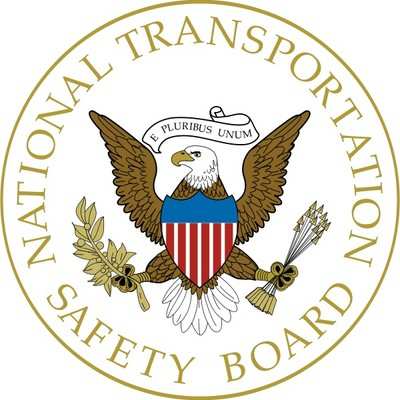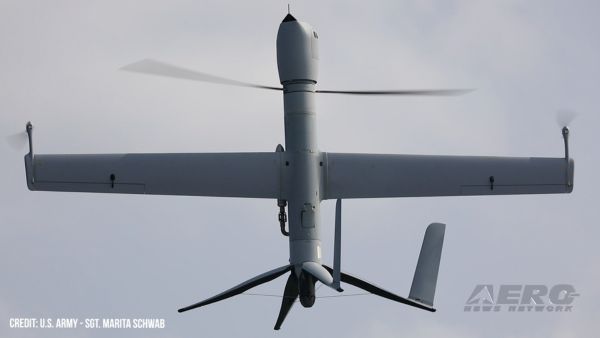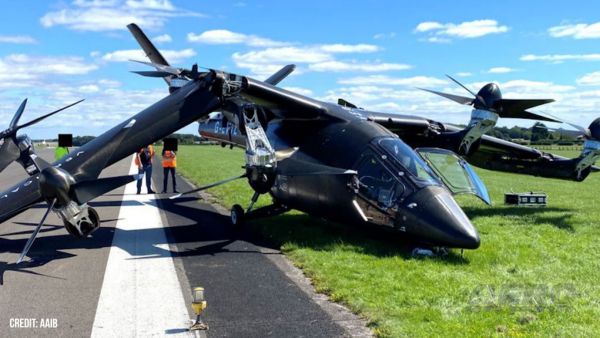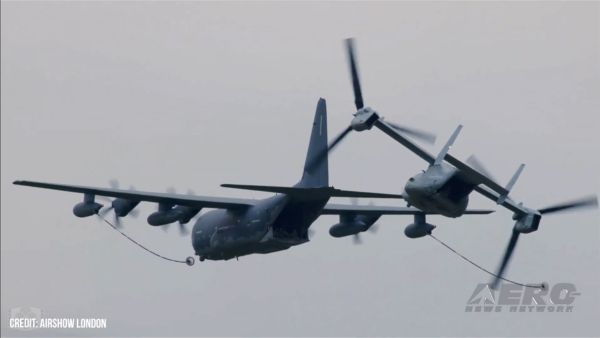NFL Star Russ Francis and AOPA Official Richard McSpadden Lost
The NTSB has released its preliminary report on a 01 October 2023 accident in which a Cessna 172 RG (Retractable Gear), registration N545PZ, was substantially damaged and its pilot and pilot-rated passenger fatally injured shortly after departing New York’s Lake Placid Airport (LKP).

The accident aircraft was operated as an aerial photography flight under Part 91 of the Federal Aviation Regulations.
The agency set forth in worryingly-poor written English:
“ … The purpose of the flight was to photograph the accident airplane while airborne for later publication in a magazine article. According to witnesses, there were two airplanes that made up the flight. The lead airplane was a Beech A36 with a photographer onboard, which took off first from runway 32 at Lake Placid Airport (LKP), Lake Placid, New York. The accident airplane took off about seven-hundred-feet behind the Beech A36. The pilot/owner was to fly the airplane during the takeoff and climb out, and after joining up in formation, the pilot rated passenger would have taken over the controls and flown the airplane during the photo shoot.
“During taxi out, witnesses heard the engine of the accident airplane running when the Beech A36 pulled up next to it. The accident airplane’s engine then shut off, and about ten-seconds later, the engine restarted. During the takeoff roll, a witness described that the engine sounded as if the propeller was set for ‘climb’ and not takeoff, then he heard the engine surge. During the initial climb, the witness further described that the engine did not sound as if it was running at full power. The accident airplane then made a gentle left turn while it was three-hundred to four-hundred-feet AGL to join with the Beech A36. As the accident airplane closed to within about one-thousand-feet of the Beech A36, it suddenly made a hard right turn back toward the departure airport. During the turn, the pilot of the Beech A36 heard the passenger in the accident airplane transmit on the common traffic advisory frequency, ‘We have a problem and we’re returning to the
airport.’
“The accident airplane subsequently impacted an embankment in a right-wing, nose-low attitude about 15-feet below the top of a plateau on airport property. The airplane then slid about thirty-feet down the embankment and came to rest on the side of the slope upright, perpendicular to the embankment with its left wing oriented toward the upslope, and its right wing oriented downslope. The initial impact point on the embankment was located about 440-feet from the approach end of runway 14, approximately 250-feet left of the runway centerline. The downslope angle was about seventy-degrees with a ravine at its bottom.
“Lake Placid Airport was located at an elevation of 1,747-feet above mean sea level, and it was equipped with a single runway in a 14/32, runway configuration. Runway 14/32 was comprised of asphalt that was in good condition, was 4,196 feet-long by sixty-feet-wide, and was marked with non-precision markings in good condition that featured a touchdown point. Runway 14 was equipped with medium intensity runway edge lights and a two-light precision approach path indicator on the left side of the runway which provided a 3.50° glidepath to touchdown. Obstructions existed in the form of 77-foot-high trees located 884-feet from the runway, 334-feet left of centerline, which required an 8:1 slope to clear. Additionally, there were 13-foot-high roads 45-feet and 145-feet from the threshold, and 12-foot-high trees 93-feet from the runway end, located 132-feet to the right of centerline.
“The recorded weather at Adirondack Regional Airport, Saranac Lake, New York, located about 13-nautical-miles northwest of LKP, at 15:51 [EDT], included wind from 010-degrees true at 7 knots, ten-statute-miles visibility, clear skies, a temperature of 23° C, a dew point of 12° C, and an altimeter setting of 30.20 inches of mercury.

“According to Federal Aviation Administration (FAA) records, the pilot held a Commercial Pilot certificate, with ratings for airplane single-engine land, multiengine land, and instrument airplane. He also possessed a type-rating for the DC-3, and Private Pilot privileges for rotorcraft-helicopter. His most recent FAA-issued second-class medical certificate was issued on 06 January 2023. He reported on that date, that he had accrued approximately nine-thousand total flight hours.
“According to FAA airworthiness and airplane maintenance records, the airplane was manufactured in 1976. The airplane's most recent annual inspection was completed on 07 April 2023. At the time of the inspection the airplane had accumulated 5,352.2 total hours of flight time, and the engine had accumulated 36.7-hours of operation since major overhaul.
“The wreckage was examined at the accident site. The right wing had sustained upward buckling from the wingtip inboard to the aileron/flap junction. The fuselage and empennage were slightly buckled along the right side from the aft side of the cabin door to approximately Fuselage Station (FS) 225. Control cable continuity was established from the flight control surfaces to the cockpit controls. The flaps were extended approximately ten-degrees; the stabilator trim was neutral.
“The fuel strainer bowl was fractured during the impact sequence and only a portion of it was observed. The fuel strainer screen was clean. The fuel selector handle operated normally in all positions and positively engaged in the detents. The position of the fuel selector valve was confirmed to be on ‘BOTH’ by rotating the handle through all positions while defueling the airplane through the inlet line of the fuel strainer. The fuel caps were closed and secured. The position of the fuel pump switch could not be determined due to impact damage. There were no obstructions noted in the fuel or fuel vent system from the wing tanks to the inlet of the fuel strainer. First responders reported fuel was draining from the airplane upon arrival. No blockages were discovered in the fuel system and 17-gallons of fuel were recovered from the right wing fuel tank. The fuel was absent of water contamination.
“The nose landing gear was crushed aft during the impact sequence and the actuator was separated (its position could not be determined). The main landing gear were in an intermediate position. The single main landing gear actuator was observed attached to its frame. The sector gear teeth were intact. There was no observable damage to the main landing gear down locks or gear legs. The main landing gear wheels were observed in contact with the buckled lower fuselage and not in the wheel wells.

“The electrical and lighting switch positions were damaged during the impact sequence and their positions could not be determined. The cowl flap handle was in the ‘OPEN’ position. The mixture control was in the full-rich position, the propeller control was in the high rpm / fine pitch position, and the throttle was out about two-inches and bent slightly up and to the left about thirty-degrees.
“The engine remained attached to the firewall through its respective engine-mounts. The engine-mount sustained damage from the impact sequence in the form of fractures and bends to various tube sections and was canted to the right of the airplane centerline. The engine-mount was cut using a reciprocating saw to free the engine from the firewall along with disconnecting or separating various fuel-hoses and control-cables.
“The propeller remained attached to the engine crankshaft. The propeller spinner was impact fractured and only half of it remained attached to the propeller hub. The propeller hub was found cracked and damaged consistent with impact, and one blade was partially dislodged from the hub. The blade exhibited leading edge scratches and gouges. The other blade was bent slightly aft at midspan with an approximate two-inch curled section of the tip separated. The blade exhibited chordwise scratching and leading edge gouging on the outer one-third of the blade.
“The top spark-plugs were all found intact, undamaged, and tightly installed in each cylinder. The top spark-plugs were removed, and a lighted borescope examination was conducted on each cylinder. No abnormalities were noted within the cylinders. The engine crankshaft was rotated by the propeller in its normal direction of rotation, and suction and compression were noted on all cylinders through the top spark plug holes, with movement of all rocker arms noted during rotation.
“All 8 spark-plugs were removed and compared to a Champion Aerospace AV-27 ‘Check-A-Plug’ Chart. Coloration across the plugs was from normal to black carbon-fouled, with normal wear to the electrodes. No mechanical electrode damage was noted or observed on any of the sparkplugs. The bottom sparkplugs for cylinders number-one and number-three were oil-soaked, consistent with orientation of the engine at the accident site and oil within the cylinders. The single-drive dual-magneto unit was found securely installed to the rear of the engine, after removal of the unit, the single-drive was rotated using an electric drill. The magneto produced spark at all ignition leads. No damage was observed to the magneto housing, but both ignition harnesses sustained varying levels of impact damage in the form of cuts and abrasions to multiple leads.
“The oil dipstick was found securely installed in the filler neck and indicated that six quarts of oil was contained in the engine oil sump. Oil was found draining from an area on the number-three cylinder exhaust tube that was impact damaged and [sic] due to the orientation of the airplane at the accident site. Oil was also found on the accessory section of the engine around the oil filter as the oil filter had sustained a high-level of impact damage and was separated from [the] oil filter’s threaded base. A portion of [the] filter element was removed, examined, and found to be clean with no metallic particles or debris present. The oil suction screen plug was found to be tight, and safety-wired to the oil sump. The screen was unobstructed and clear of any debris.

“The fuel system including the engine-driven fuel pump, fuel manifold, and fuel servo were all found attached to the engine at the time of the examination. The fuel pump’s 45-degree outlet fitting was found slightly loose with the mating hose tight to the fitting. No fuel staining was observed from the fitting or on the fuel pump housing itself. The fuel-divider was tightly installed to the top of the engine with all injection lines tight and secure to each injection-nozzle. The fuel-injection manifold was disassembled with no debris or tears noted to its diaphragm. The fuel servo was attached to the lower side of the engine with all lines tight and secure, but all four hold down nuts were found loose when slight pressure with a wrench was applied. Torque stripes were present on the studs and nuts. The torque stripes did not appear to be disturbed or misaligned. The throttle plate was found in the closed position. When the throttle arm was actuated manually, the throttle plate moved
freely within the servo, but the threaded rod for the idle thumb screw adjustment was found fractured and not connected. The fuel-injection nozzles were found to be free and clear of any debris.
“The vacuum pump was found securely installed to the accessory section of the engine. The rotor and vanes within were all found intact with no fractures or damage observed. The drive coupling was present with no damage observed and the entire unit spun freely when rotated by hand.
“The propeller governor was found securely installed to the rear of the engine. Its screen was found free and clear of any debris and oil flowed from the unit when rotated by hand.
“The wreckage was retained for further examination.”
The presented information is preliminary and subject, therefore, to change.
Parties interested in learning more about the described occurrence should reference NTSB Accident Number ERA24FA001.
 ANN's Daily Aero-Term (05.10.24): Takeoff Roll
ANN's Daily Aero-Term (05.10.24): Takeoff Roll Aero-News: Quote of the Day (05.10.24)
Aero-News: Quote of the Day (05.10.24) Aero-News: Quote of the Day (05.11.24)
Aero-News: Quote of the Day (05.11.24) ANN's Daily Aero-Term (05.11.24): IDENT Feature
ANN's Daily Aero-Term (05.11.24): IDENT Feature ANN's Daily Aero-Linx (05.11.24)
ANN's Daily Aero-Linx (05.11.24)






